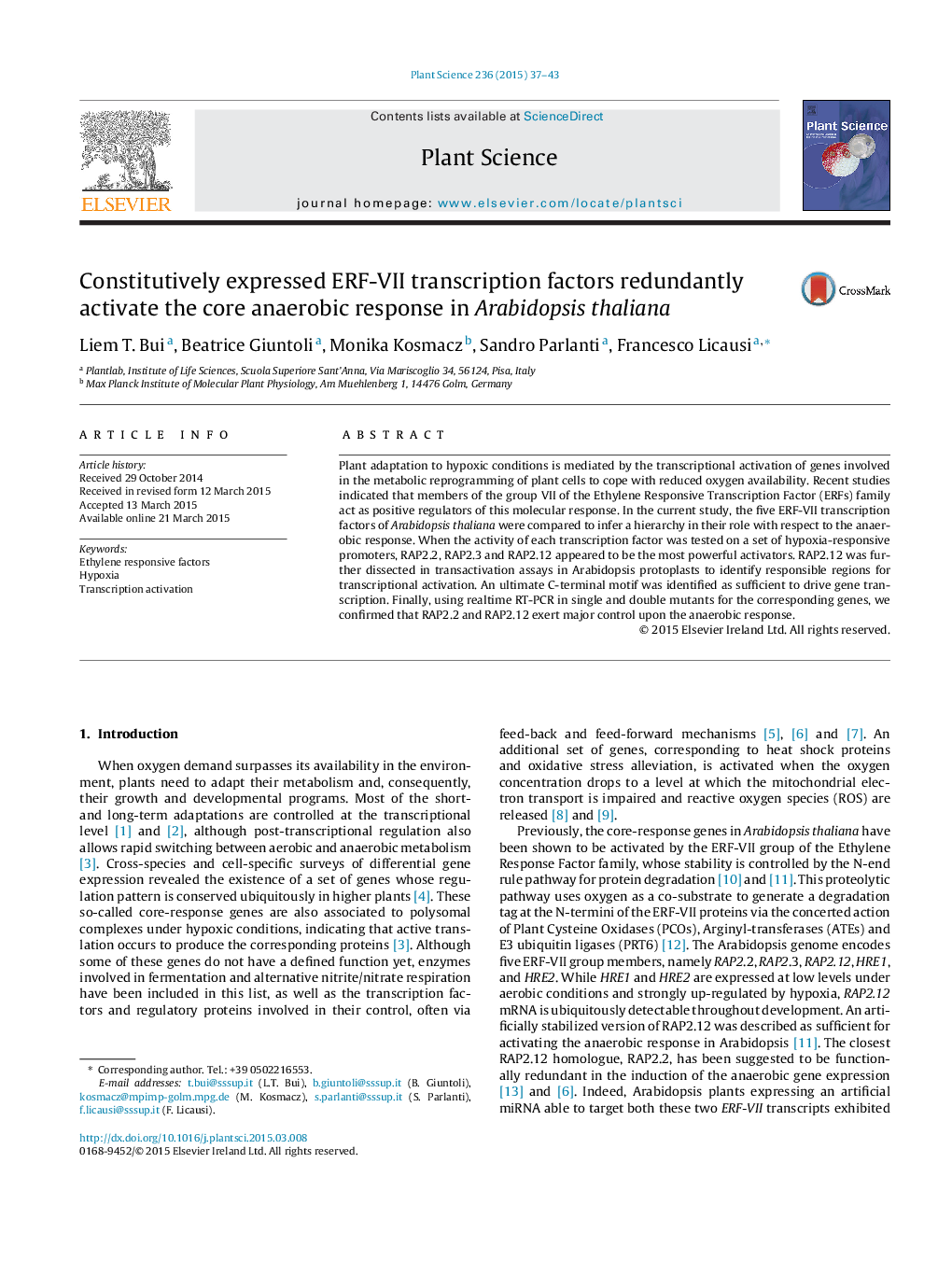| Article ID | Journal | Published Year | Pages | File Type |
|---|---|---|---|---|
| 2017019 | Plant Science | 2015 | 7 Pages |
•RAP2.2, RAP2.3 and RAP2.12 exert strong transactivation upon anaerobic promoters.•RAP2.2, RAP2.3 and RAP2.12 have partially overlapping expression profiles.•A short C-terminal fragment of RAP2.12 is sufficient to activate transcription.•The molecular response to hypoxia is hampered in a rap2.2-12 double mutant.
Plant adaptation to hypoxic conditions is mediated by the transcriptional activation of genes involved in the metabolic reprogramming of plant cells to cope with reduced oxygen availability. Recent studies indicated that members of the group VII of the Ethylene Responsive Transcription Factor (ERFs) family act as positive regulators of this molecular response. In the current study, the five ERF-VII transcription factors of Arabidopsis thaliana were compared to infer a hierarchy in their role with respect to the anaerobic response. When the activity of each transcription factor was tested on a set of hypoxia-responsive promoters, RAP2.2, RAP2.3 and RAP2.12 appeared to be the most powerful activators. RAP2.12 was further dissected in transactivation assays in Arabidopsis protoplasts to identify responsible regions for transcriptional activation. An ultimate C-terminal motif was identified as sufficient to drive gene transcription. Finally, using realtime RT-PCR in single and double mutants for the corresponding genes, we confirmed that RAP2.2 and RAP2.12 exert major control upon the anaerobic response.
